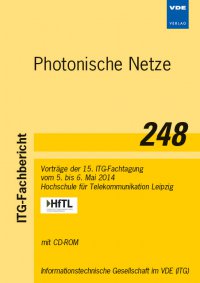Estimates of Constrained Coded Modulation Capacity for Optical Networks
Conference: Photonische Netze - Vorträge der 15. ITG-Fachtagung
05/05/2014 - 05/06/2014 at Leipzig, Deutschland
Proceedings: Photonische Netze
Pages: 6Language: englishTyp: PDF
Personal VDE Members are entitled to a 10% discount on this title
Authors:
Fehenberger, Tobias; Kristl, Felix; Hanik, Norbert (Institute for Communications Engineering, Technische Universitaet Muenchen, 80333 Muenchen, Germany)
Behrens, Carsten; Gladisch, Andreas (Telekom Innovation Laboratories, Winterfeldtstr. 21, 10781 Berlin, Germany)
Ehrhardt, Armin (Deutsche Telekom Technik GmbH, FMED 24, Winterfeldtstr. 21, 10781 Berlin, Germany)
Abstract:
For advanced FEC schemes with soft-decision decoding, the mutual information (MI) between sent and received symbols is the natural figure of merit at the decoder input. In this work, the transmission of signals modulated with rectangular quadrature amplitude modulation (QAM) of order 16, 64, and 256 is simulated over three different fiber links that are typical representatives of metro-area networks used by Deutsche Telekom. At the receiver, the MI between sent and received symbols is estimated using histograms for which the correct bin number is determined in a reliable way. As MI is the constrained capacity, the channel capacity of an optical communication system including all components at transmitter and receiver is found. From the capacity we can derive the maximum spectral efficiency and the maximum data rate over the entire available spectrum for a fixed transmitter, link, and receiver design. For an average metro-area network link, more than 26 Tbit/s at a 50 GHz spacing are possible over the entire C-band. By decreasing the spacing to be close to the Nyquist rate, a dual-polarization spectral efficiency of 10.8 bit/s/Hz is possible, which increases the maximum total data rate per fiber to an astonishing 43.2 Tbit/s.


